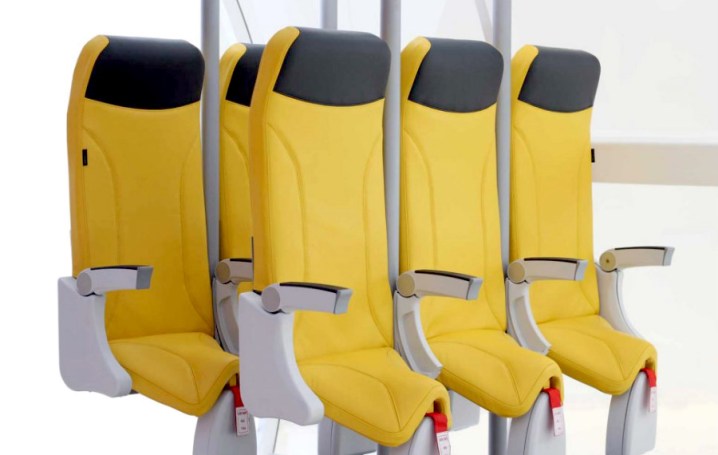
As if flying in coach wasn’t already challenging enough, there’s a company out there that could make the experience even more of a squeeze if airlines end up buying its latest seat design.
The seat — no, let’s call it for what it is, a perch — is made by Italian firm Aviointeriors, and it means you’d be as good as standing for the duration of your flight if you ever leaned up against one.
The compact design would allow airlines to pack even more people onto their planes, enabling them to increase efficiency and maximize profits. If any passenger dares to buy a ticket for one, that is.
Made, we sincerely hope, for short-haul flights — very short-haul — “Skyrider 2.0” was unveiled at the recent Airliners Interiors Expo in Hamburg, Germany.
It’s baaaaaack! The AvioInteriors Skyrider saddle seat is returning to #AIX18 after its controversial reception. Will the fact that 28” is normal on low-cost carriers mean that a 23” squat for a (very) short flight seems more #PaxEx palatable? #avgeek pic.twitter.com/zLylr91NiT
— John Walton • @thatjohn.bsky.social (@thatjohn) April 10, 2018
“What, you mean there was a version 1?” you may well ask. There most certainly was, and it came with less padding, so it’s great the company has made at least one positive enhancement regarding the design. But no, we still don’t fancy the idea of leaning back on one of these for more than, say, a few minutes.
If the thought of standing for an entire flight isn’t bad enough, then also consider that the perch in front would be so close that you’d feel like you were stuck inside a cubicle. With a bunch of other people.
The curious thing is, the Skyrider doesn’t appear on Aviointeriors’ website. You’ll see lovely seat designs for first class and business class, and even its economy seats don’t look too bad. So we’re wondering if it might soon add a “no class (at all)” section for the Skyrider, or perhaps the old favorite, “cattle class.”

But before you scoff and mutter, “It’ll never happen,” bear in mind that Airbus has also been looking into the idea of offering a similar kind of seating style to buyers of its aircraft. A couple of years back, a patent from the aerospace giant showed an even more hideous design than the Skyrider that appeared to involve bicycle saddles. And that’s it — no headrest, no legroom, and no seat-back display. Because there is no seat-back.
Airlines may have dollar signs flashing in their eyes at the prospect of fitting some of its aircraft with one of these space-saving designs, though in reality they may have trouble persuading travelers to park their butt on such a seat.
Though if the price was dirt cheap, could you be persuaded? And for how long could you fly on one of these?


